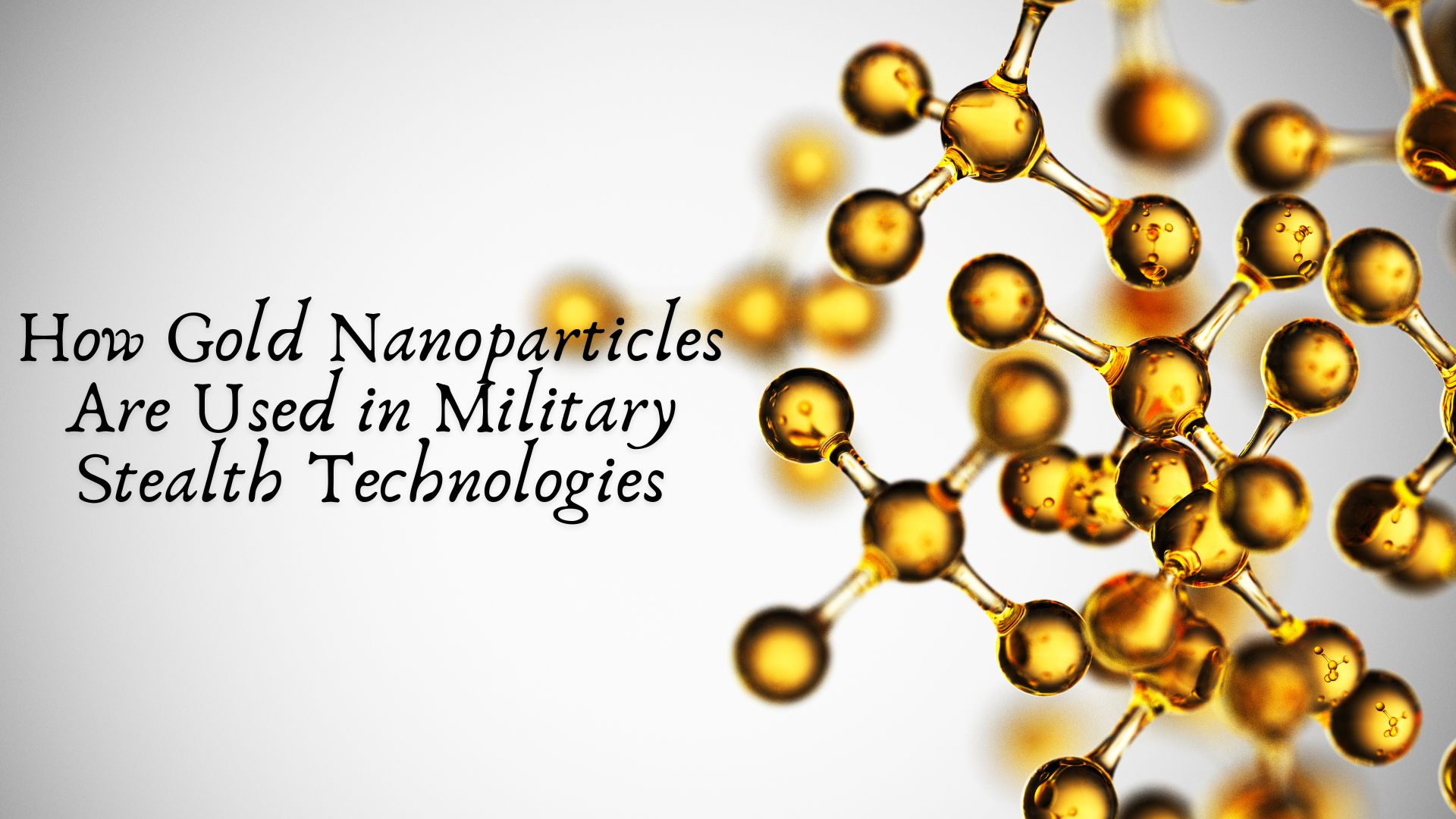Introduction
In modern warfare, stealth technology plays a critical role in enhancing the effectiveness of military operations. Advances in nanotechnology have provided new avenues for improving stealth capabilities, and gold nanoparticles (AuNPs) have emerged as a key material in this domain. Their unique optical, electrical, and thermal properties make them highly valuable for applications in stealth technology, particularly in reducing radar and infrared (IR) signatures, improving electromagnetic shielding, and enhancing counter-surveillance techniques. This article explores the various ways in which gold nanoparticles contribute to military stealth technologies.
Properties of Gold Nanoparticles That Aid Stealth Technology
Gold nanoparticles exhibit several physical and chemical properties that make them ideal for stealth applications:
- High Conductivity: AuNPs exhibit excellent electrical conductivity, allowing them to enhance electromagnetic interference (EMI) shielding.
- Surface Plasmon Resonance (SPR): This property allows gold nanoparticles to absorb and scatter light efficiently, making them useful for IR signature reduction and cloaking applications.
- Biocompatibility and Chemical Stability: Unlike many other metals, gold is chemically stable and does not easily corrode, making it highly durable in various military environments.
- Nanoscale Size and Tunability: Gold nanoparticles can be synthesized in different shapes and sizes, allowing them to be tailored for specific stealth applications.
Applications of Gold Nanoparticles in Military Stealth Technologies
Radar Absorption and Reduction of Radar Cross-Section (RCS)
Radar detection is one of the primary threats to stealth operations. Gold nanoparticles are used to develop radar-absorbing materials (RAMs) that reduce the radar cross-section (RCS) of aircraft, ships, and ground vehicles. By embedding AuNPs into composite materials, radar waves are absorbed rather than reflected, significantly decreasing the detectability of military assets.
Infrared Signature Suppression
Military vehicles and personnel emit heat, making them vulnerable to detection by infrared sensors. Gold nanoparticles are integrated into coatings and textiles to manage thermal emissions. Due to their ability to scatter and absorb infrared radiation, AuNP-infused materials can mask heat signatures, reducing visibility to infrared tracking systems.
Electromagnetic Shielding for Secure Communications
In modern warfare, electronic countermeasures (ECMs) are crucial to disrupting enemy communications and surveillance. Gold nanoparticles contribute to advanced electromagnetic shielding by absorbing and neutralizing electromagnetic waves that could be used for eavesdropping or targeting electronic systems. This ensures secure communications and reduces electronic interference from hostile forces.
Advanced Camouflage and Adaptive Cloaking Materials
Recent advancements in metamaterials have leveraged gold nanoparticles to create dynamic camouflage systems. These materials can adjust their optical and thermal properties in real-time, allowing military assets to blend seamlessly into different environments. By incorporating AuNPs into flexible and wearable textiles, soldiers can achieve superior concealment on the battlefield.
Stealth Coatings for Unmanned Aerial Vehicles (UAVs) and Drones
With the increasing use of UAVs in surveillance and combat missions, stealth coatings are essential for ensuring their survivability. Gold nanoparticles enhance the stealth properties of UAV coatings by reducing both radar and infrared visibility. Additionally, AuNP-based coatings improve durability and resistance to harsh environmental conditions, extending the operational lifespan of UAVs.
Challenges and Future Prospects
While gold nanoparticles offer numerous advantages in stealth technology, there are challenges that need to be addressed:
- Cost: Gold is an expensive material, making large-scale deployment financially demanding.
- Manufacturing and Scalability: Developing uniform and high-quality gold nanoparticle composites at a large scale remains a challenge.
- Integration with Existing Military Hardware: Adapting AuNP-based materials to existing military assets requires further research and development.
Despite these challenges, ongoing research in nanotechnology and material sciences continues to improve the efficiency and affordability of gold nanoparticle-based stealth solutions. Future advancements may lead to even more sophisticated applications, such as quantum stealth materials and self-repairing coatings.
Conclusion
Gold nanoparticles have revolutionized the field of military stealth technology by providing innovative solutions for radar absorption, infrared suppression, electromagnetic shielding, and adaptive camouflage. Their unique properties make them invaluable in the development of next-generation stealth materials, ensuring the effectiveness of modern defense systems. As research progresses, gold nanoparticles will likely play an even greater role in shaping the future of military stealth capabilities.












Leave a Reply